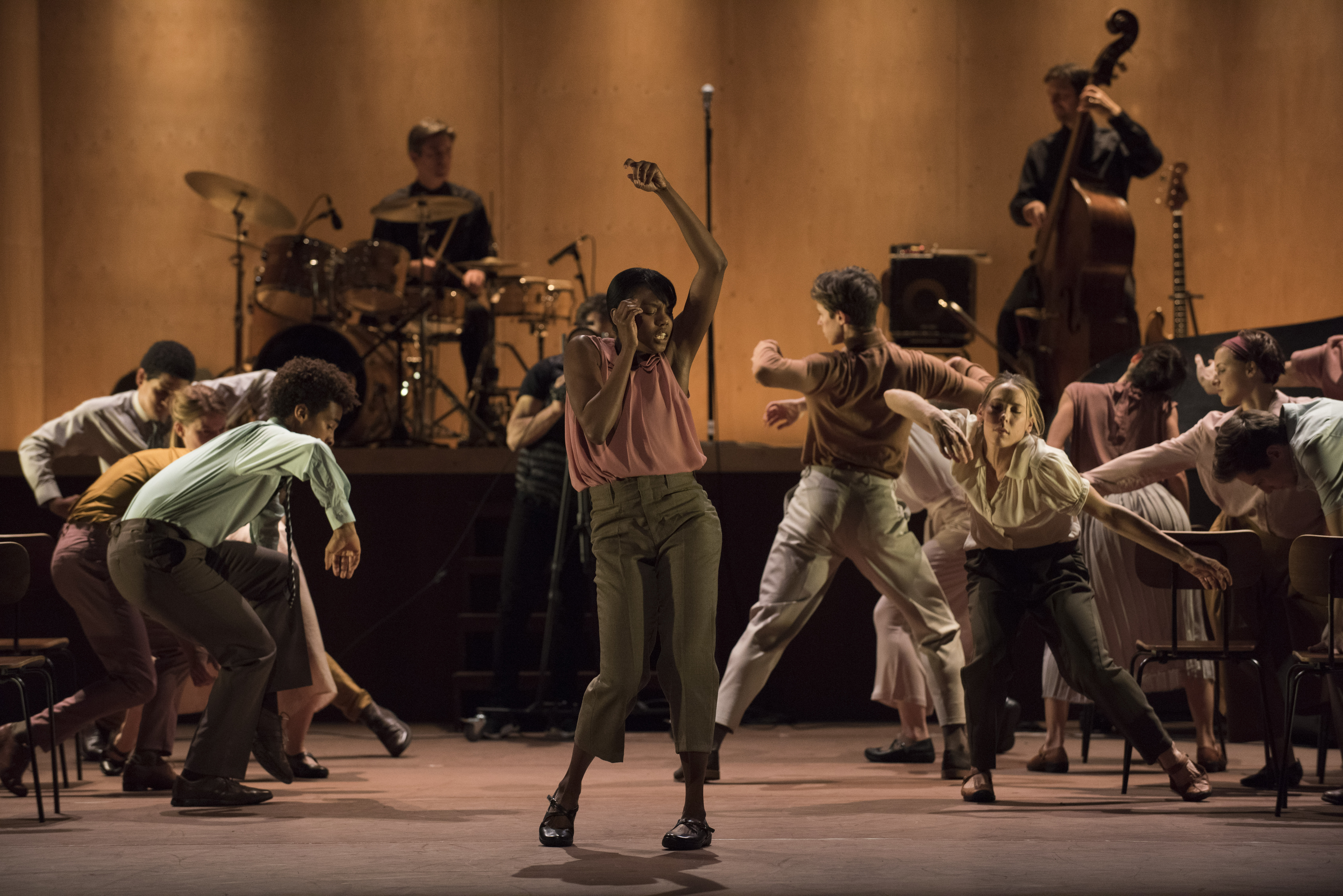
Goat.-Rambert-Dancers-FrontCentre-Daniel-Davidson.-©-Hugo-Glendinning
Rambert delivered a series of fluid performances where human bodies became elegant oscillations, much like the metallic wall used on stage to divide the dancers in the opening piece: Symbiosis. Like the advancing and retreating waves of the ocean, the dancers became a united tide that moved in elegant fluctuations. From the shifting lights throughout the beginning piece – from blue, to red, to yellow – the performance evoked the captivating process of the birth of an organism. Although at times during the synchronised pieces, some faltered, the piece was choreographed beautifully, with its live orchestra below stage enthralling the audience and transporting them into a fluid realm created before our eyes. Finishing the piece with co-ordinated circular exits by the dancers, the piece worked like a united organism (or organisms) that fled the stage like a hypnotising whirlpool.
The following piece titled To Be Me intertwined spoken word with expressive dance to talk about gender, growing up and the internal struggles of being who you are. Through dancers mirroring each other then pushing each other in combative tension, the piece suggested the self-inflicting capabilities humans have both physically and mentally. This piece was extremely moving and its spoken word worked alongside it seamlessly to provide a biographical touching outcome of self-struggle and self-understanding. The one dancer that stole my attention throughout this piece was Hannah Burfield from Julie Cunningham & Company. Her technique and control was flawless, especially when executing a slow-paced pirouette with intermittent stops, where her body did not falter at all and was pseudo-robotic: immaculate.

Symbiosis-Stephen-Quildan-Liam-Francis-Juan-Gil-Adam-Park-©-Stephen-Wright
In the 70s inspired final piece – Goat – the stage hosted a live band while dancers sat looking away from the audience to watch it. In a layering effect, dancers acted as singers and actors who lip-synced while the singer, Nia Lynn, was hidden on one of the chairs amongst the other dancers. One of the dancers, Miguel Altunaga, became the host of this ‘event’ and acted comically who directed a cameraman to film this strange act. Audiences were able to not only see through the camera’s lense – as a television reproducing these images was set on stage – but could see behind it. Giving such diverse perspective on this stage made the performance captivating – there was always something new to observe. In a climactic and bizarre sacrificial act where one of the dancers had to ‘dance til the death’ the piece concludes with a romantic duo who proved their love to each other could save the dancer’s life. What made this concluding part so effective was the powerful lyrical voice of Nia Lynn who intensified the passionate love that we could see on stage in the lovers embrace.
It was no surprise that Rambert would satisfy its audiences with their high-end classical, experimental and humorous acts. For another year, they did not disappoint and achieved an interdisciplinary show were dancers became actors, poets and comedians to give an innovative contemporary take on classical ballet.

Goat.-Liam-Francis-Nia-Lynn.-©-Hugo-Glendinning
Featured Image: Goat.-Carolyn-Bolton-Rambert-Dancers.-©-Hugo-Glendinning

